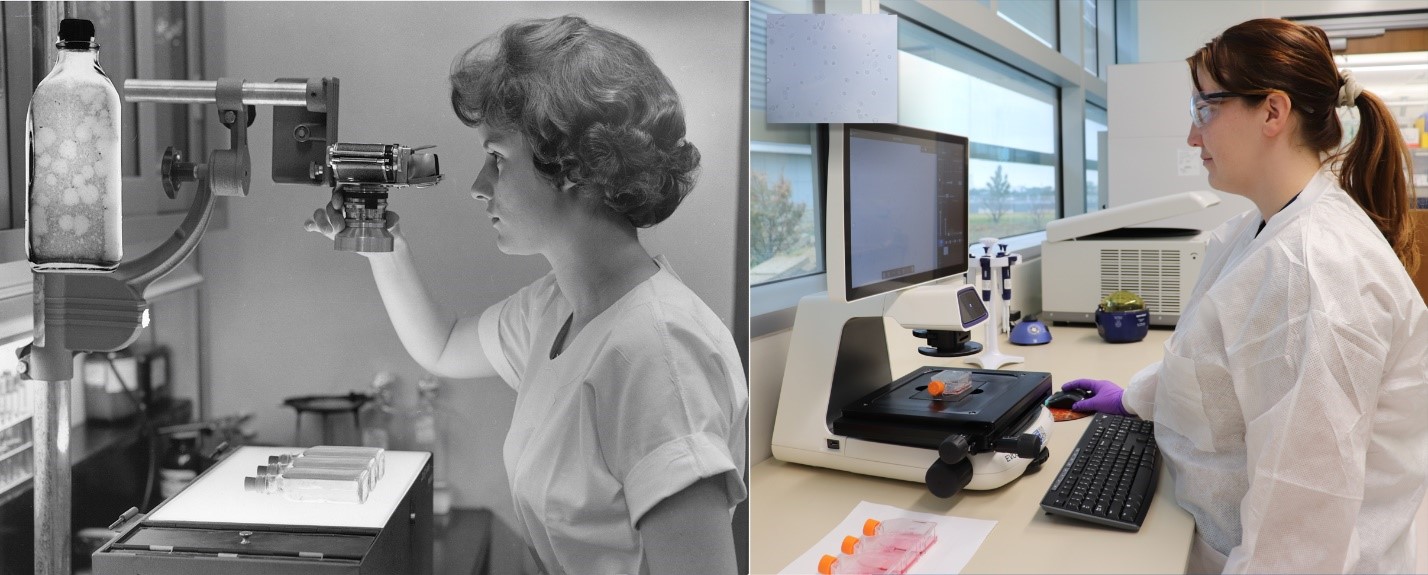Getting to Science | USDA

By Stephanie Jacques, Public Relations Specialist
April 2024
After years of discussion, planning, construction and testing, the USDA’s National Center for Biodefense and Agrodefense, or NBAF, is finally getting down to science.
Science at NBAF is beginning in phases. This phased process began with common, low-risk scientific practices that do not involve infectious pathogens and is evolving into more advanced or mission-focused science in later phases. As NBAF increases scientific operations in Manhattan, Kansas, its predecessor – the Plum Island Animal Disease Center in New York – will continue to protect American agriculture until NBAF is ready to assume the center’s entire mission.
“We are not embarking on this journey alone,” said Dr. Robin Holland, director of the NBAF Foreign Animal Disease Diagnostic Laboratory. “We stand on the shoulders of giants who have been planning the NBAF for decades. We are honored by the opportunity to carry his torch, build on his progress, honor his legacy, and realize his vision for a safer, more resilient U.S. agriculture.”
As part of the gradual beginning of science, NBAF recreated a laboratory photo of Plum Island using a modern NBAF microscope and the appropriate personal protective equipment common today for this type of science. This retrospective comparison honors all of the scientists – especially the women – who made Plum Island a success and provided a legacy from which the NBAF can grow and expand.
NBAF’s initial scientific functions included sequencing a healthy housefly genome, seeding a cell culture, meaning growing a contaminant-free cell line from frozen hamster kidney cells, and initiating a fixed library of microscope slides of healthy tissue. Each of these scientific activities poses no risk to people or livestock and is basic science and fundamental to NBAF’s future mission.
Current scientific activities at NBAF are at biosafety levels 1 and -2 – which include clean, non-infectious materials as well as moderate-risk microbes. This is similar to scientific work at most universities, colleges, and diagnostic laboratories across the country. Activities will progress to biosafety levels 3 and -4 as safety and science objectives are achieved.
“This is a once-in-a-lifetime opportunity,” Holland said. “The complexity of the NBAF is beyond comprehension. The only way forward is to work together as a team to build the foundation of a program that is bigger and longer than any of our careers.”
As NBAF advances through the scientific phases, the facility and its procedures are required by law to undergo inspections and reviews by federal regulatory agencies. USDA staff continue to outline and refine the specifics of Plum Island’s scientific and transition phases.





